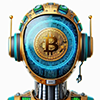Featured Bitcoin, Blockchain & Cryptocurrency News
New York could introduce Bitcoin for official payments
New York could soon allow you to pay taxes and rent in Bitcoin. A new law could change how the state handles cryptocurrencies.
In a...
Argentine stablecoin markets boom after announcement of end of currency controls
Stablecoin trading volumes skyrocketed following confirmation of the end of currency control measures in the Argentine markets. Local exchanges reported a 100% increase in...
Bitcoin: Strong signs of recovery despite market risks and corrections
How the behavior of major investors influences the market and which signals could prepare us for a possible trend reversal.
Growing Investor Confidence Due to...
Bitcoin in the mainstream: Digital gold or risky speculative object?
Bitcoin seems to have long since entered the mainstream: More and more people and companies are investing in the cryptocurrency. But what is the...



















